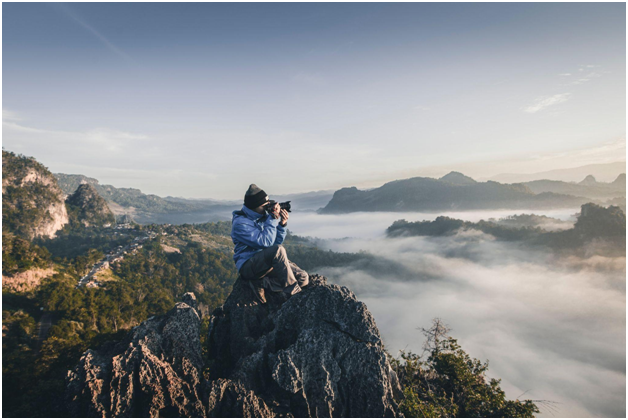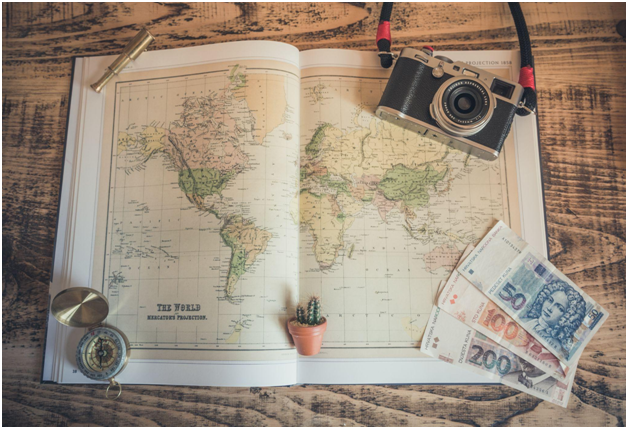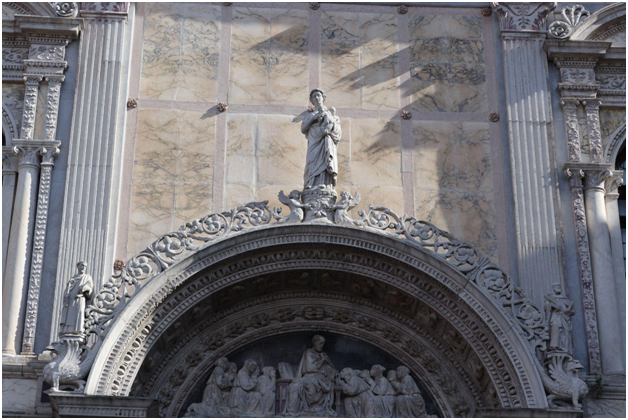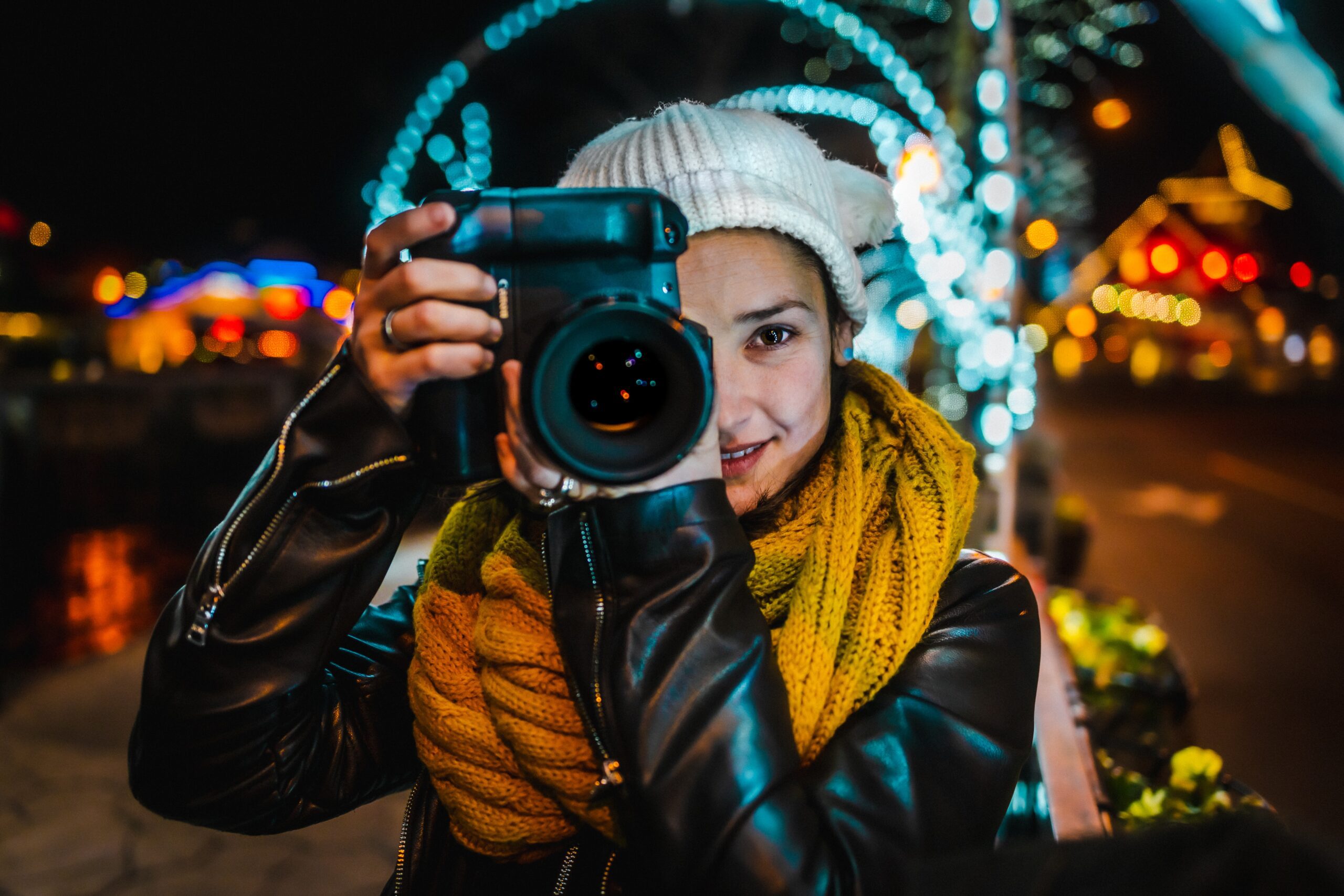Travel photography is a captivating form of art that allows us to explore the world and document our journeys through visually stunning images. From breathtaking landscapes to vibrant cityscapes, candid moments to cultural traditions, travel photography encompasses a wide range of subjects and techniques. In this article, we will delve into the fascinating world of travel photography, providing you with tips, techniques, and insights to enhance your skills and capture memorable moments wherever your adventures take you.

Introduction
Travel photography is the art of capturing the essence of a destination, its people, and its culture through photographs. It goes beyond simply taking snapshots and aims to evoke emotions, tell stories, and create a visual narrative of our travels. Whether you’re exploring remote and exotic locations or immersing yourself in bustling city streets, travel photography allows you to freeze moments in time and preserve memories for years to come.
Types of Travel Photography
When it comes to travel photography, there are various genres and styles to explore. Here are some of the most popular types:
-
Landscape Photography
Landscape photography focuses on capturing the beauty of natural scenery. From majestic mountains to serene beaches, this genre allows you to showcase the awe-inspiring landscapes you encounter during your travels.
-
City scapes
Cityscapes showcase the urban environment and skyline of a city. It involves capturing iconic landmarks, architectural marvels, bustling streets, and the unique energy of urban life.
-
Street Photography
Street photography is all about capturing the essence of everyday life in public spaces. It involves documenting candid moments, interesting characters, and the vibrant atmosphere of streets and markets.
-
Wildlife Photography
Wildlife photography involves capturing animals in their natural habitats. Whether it’s a majestic lion on an African safari or a colorful bird in the Amazon rainforest, this genre allows you to capture the beauty and diversity of the animal kingdom.
-
Travel Portraits
Travel portraits focus on capturing the people you encounter during your travels. It involves portraying the faces, emotions, and stories of individuals, providing a glimpse into different cultures and lifestyles.
Techniques for Capturing Stunning Travel Photos
While having a good eye for composition and subject matter is important in travel photography, employing various techniques can take your photos to the next level. Here are some techniques to consider:
-
Golden Hour Photography
The golden hour refers to the period shortly after sunrise or before sunset when the light is soft, warm, and diffused. This magical light enhances the colors and textures of your subject, creating a captivating atmosphere in your photographs.
-
Long Exposure Photography
Long exposure photography involves using longer shutter speeds to capture motion blur or create surreal effects. This technique is particularly useful for capturing flowing waterfalls, light trails at night, or smooth, dreamy seascapes.

-
Adventure Photography
Adventure photography captures the thrill and excitement of outdoor activities. From hiking and rock climbing to paragliding and scuba diving, this genre allows you to document adrenaline-pumping moments and showcase the beauty of nature.
-
Architectural Photography
Architectural photography focuses on capturing the design, details, and unique features of buildings and structures. It involves paying attention to lines, shapes, symmetry, and textures to create visually striking images.
-
Candid Moments
Capturing candid moments is all about photographing people in unposed and natural situations. It requires observation, patience, and the ability to anticipate moments that tell a story or convey emotions.
Essential Travel Photography Gear
To capture stunning travel photos, it’s important to have the right gear. While professional cameras and lenses can enhance the quality of your images, there are options for every budget. Here are some essential pieces of travel photography gear:
-
Cameras
When it comes to cameras, there are various options available, ranging from compact point-and-shoot cameras to advanced mirrorless and DSLR cameras. Choose a camera that suits your needs and budget, considering factors such as image quality, size, and versatility.
-
Lenses
Lenses play a crucial role in travel photography. A versatile zoom lens or a combination of prime lenses can cover a wide range of focal lengths and allow you to capture diverse subjects, from sweeping landscapes to detailed portraits.
-
Tripods
A sturdy and lightweight tripod is essential for capturing sharp images, especially in low-light situations or when using longer exposures. Look for a tripod that is easy to carry and can support the weight of your camera and lens.
-
Filters
Filters can enhance your images and provide creative effects. A polarizing filter can reduce reflections and increase color saturation, while neutral density (ND) filters can help you achieve long exposures during bright daylight.
-
Memory Cards
Having sufficient memory cards is crucial for travel photography. Invest in high-quality, high-capacity memory cards to ensure you have enough storage space for all your photos.
Composition Techniques for Better Travel Photos
Composition is a key aspect of photography that can greatly impact the visual appeal of your images. Here are some composition techniques to consider when capturing travel photos:

-
Rule of Thirds
The rule of thirds involves dividing the frame into a grid of nine equal parts by placing two horizontal lines and two vertical lines. Positioning your subject or points of interest along these lines or at their intersections can create a visually pleasing and balanced composition.
-
Leading Lines
Leading lines are elements in a photo that guide the viewer’s eyes towards the main subject. They can be roads, pathways, fences, or any other lines that draw attention and create a sense of depth and movement in your composition.
-
Depth of Field
Controlling the depth of field allows you to emphasize your subject and create a sense of separation from the background. Use a wide aperture (small f-number) to achieve a shallow depth of field for portraits or focus throughout the scene by using a smaller aperture.
-
Light and Shadow
Light and shadow play a crucial role in photography. Experiment with different lighting conditions, such as backlighting or side lighting, to create dramatic effects, add depth, and enhance the mood of your photos.
-
Reflections and Mirrors
Reflections and mirrors can add a unique and surreal touch to your travel photos. Look for reflective surfaces like water, glass, or polished surfaces to capture intriguing reflections that add depth and visual interest to your composition.
Tips for Successful Travel Photography
Aside from techniques and gear, here are some additional tips to enhance your travel photography:
-
Research Your Destination
Before embarking on your journey, research your destination. Understand its culture, customs, and landmarks. This knowledge will help you capture the essence of the place and make informed decisions about what to photograph.
-
Interact with Locals
Engage with the local community and build connections. Interacting with locals can lead to unique opportunities, authentic experiences, and the chance to capture genuine moments and emotions.
-
Be Patient and Observant
Travel photography requires patience and observation. Take the time to study your surroundings, anticipate moments, and wait for the perfect light or composition. The best shots often come to those who are patient and attentive.
-
Experiment with Different Angles and Perspectives
Don’t be afraid to get creative with your angles and perspectives. Explore different vantage points, such as shooting from low or high angles, to add visual interest and a fresh perspective to your images.
-
Edit Your Photos for the Perfect Finishing Touch
Post-processing is an important part of travel photography. Use editing software to enhance colors, adjust exposure, and fine-tune your images. However, be mindful not to overdo it and maintain the authenticity of your photos.
Capturing Cultural Moments Through Travel Photography
One of the joys of travel photography is capturing the cultural aspects of a destination. Here are some cultural moments you can focus on:
-
Festivals and Celebrations
Attending festivals and celebrations provides ample opportunities for capturing vibrant colors, traditional costumes, and joyous moments of cultural significance.
-
Traditional Ceremonies
Documenting traditional ceremonies allows you to capture rituals, customs, and expressions of cultural heritage. Whether it’s a wedding ceremony, a religious procession, or a traditional dance performance, these moments provide a rich tapestry of visual storytelling.
-
Everyday Life and Customs
Capturing everyday life and customs gives you a glimpse into the daily routines, traditions, and interactions of the local people. It allows you to document the authentic experiences that make a place unique.
-
Local Markets and Street Scenes
Exploring local markets and street scenes offers a treasure trove of photographic opportunities. From vibrant displays of produce to bustling activity and colorful street vendors, these scenes showcase the local culture and way of life.
-
Historical Landmarks
Historical landmarks tell the stories of a place’s past. Capture the architectural details, textures, and grandeur of ancient temples, castles, or ruins, allowing viewers to travel back in time through your photos.

Exploring Minimalist Photography in Travel
Minimalist photography focuses on simplicity, clean lines, and negative space. Here are some ways to incorporate minimalism into your travel photography:
-
Simplifying the Composition
Eliminate distractions and focus on a single subject or a few key elements to create a minimalist composition. Emphasize simplicity and avoid cluttered backgrounds.
-
Emphasizing Negative Space
Negative space refers to the empty areas surrounding the main subject. Use negative space to create a sense of balance, highlight your subject, and evoke a feeling of calmness and serenity.
-
Using a Limited Color Palette
Choose a limited color palette in your composition to create a harmonious and visually pleasing image. Restricting the colors in your frame can bring attention to the main subject and add a sense of elegance.
-
Creating Visual Impact with Simplicity
Simplicity often has a strong visual impact. Focus on minimal elements, clean lines, and strong shapes to create powerful and eye-catching compositions.
-
Telling a Story with Minimal Elements
Minimalist photography can still convey a story or evoke emotions. Look for subtle details, gestures, or interactions that can communicate a narrative within your minimalist composition.
Photography Opportunities in Remote and Exotic Locations
Exploring remote and exotic locations offers unique photography opportunities. Here are some tips for capturing stunning images in such places:
-
Researching Off-the-Beaten-Path Destinations
Look beyond popular tourist destinations and research off-the-beaten-path locations. These lesser-known places often provide extraordinary landscapes, cultural experiences, and fewer crowds.
-
Planning for Logistical Challenges
Traveling to remote locations may involve logistical challenges such as limited infrastructure, language barriers, or restricted access. Plan ahead, be prepared, and have contingency plans to ensure a smooth and successful journey.
-
Interacting Respectfully with Local Communities
When visiting remote or exotic locations, it’s crucial to respect the local communities and their traditions. Seek permission before taking photos of people, be culturally sensitive, and strive to create meaningful connections.
-
Immersing Yourself in the Local Culture
To capture authentic images, immerse yourself in the local culture. Learn about their traditions, customs, and daily routines. This understanding will help you capture genuine moments and portray the true essence of the place.
-
Capturing Unique and Memorable Shots
Remote and exotic locations offer opportunities for extraordinary shots. Be open to unexpected moments, unique landscapes, and wildlife encounters. Embrace the adventure and capture the essence of these special places through your lens.
Conclusion
Travel photography is a powerful medium that allows us to document our journeys, preserve memories, and share our experiences with others. By applying various techniques, exploring different genres, and immersing ourselves in the local culture, we can capture captivating images that tell stories, evoke emotions, and inspire wanderlust. So, grab your camera, pack your bags, and embark on a photographic adventure that will enrich your life and create timeless memories.
FAQs:
Answer: The best camera for travel photography depends on your needs and preferences. Consider factors like image quality, size, weight, and versatility. Mirrorless cameras and compact DSLRs are popular choices due to their portability and image quality.
Answer: To capture candid moments, blend into the surroundings, observe people’s behavior, and be ready to capture spontaneous interactions. Avoid drawing attention to yourself and use a zoom lens or a discrete approach to capture genuine emotions.
Answer: Some essential composition techniques include the rule of thirds, leading lines, depth of field, and the use of light and shadow. Experiment with different angles and perspectives to add interest to your compositions.
Answer: Use photo editing software like Adobe Lightroom or Capture One to enhance your travel photos. Adjust the exposure, color balance, and contrast to bring out the best in your images. Remember to maintain a natural and authentic look.
Answer: Look beyond the typical tourist attractions and explore off-the-beaten-path destinations. Remote and exotic locations offer incredible opportunities for capturing unique landscapes, cultures, and experiences.
Must Read: Cheap Destinations: Traveling on a Budget

